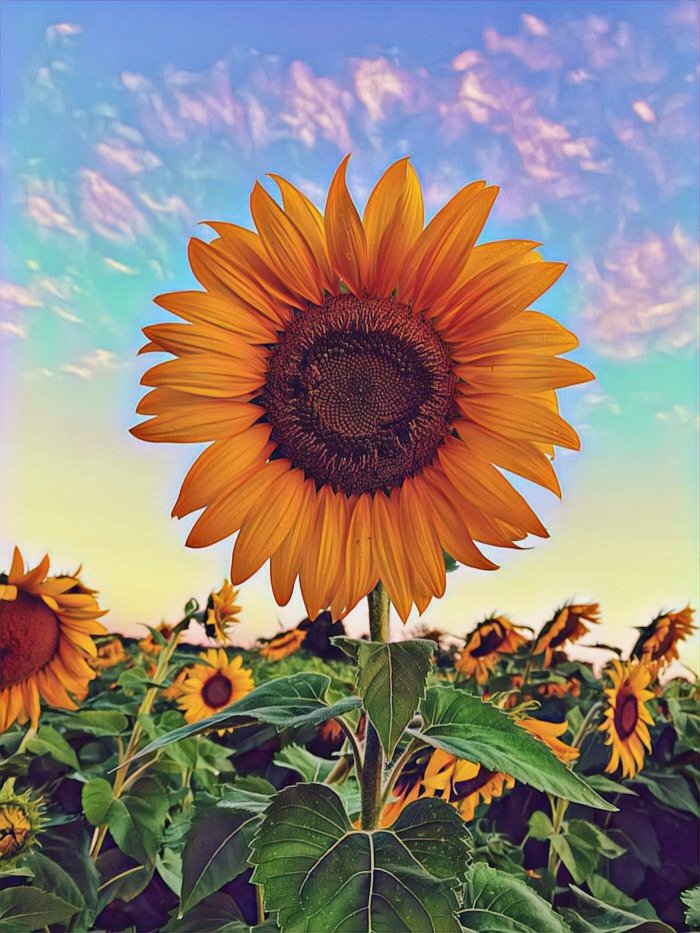Sunflowers, known scientifically as Helianthus annuus, are a genus of plants comprising about 70 species, and they are one of the most recognizable and beloved flowers worldwide. Their distinctive yellow petals and large, dark centers are not only aesthetically pleasing but also serve an important purpose in nature.

The name "sunflower" derives from the flower's tendency to reposition itself to face the sun. This phenomenon is known as heliotropism. Sunflowers begin this behavior as buds and young flowers, following the movement of the sun from east to west during the day, which maximizes their ability to capture solar energy through photosynthesis. However, as they mature and the stems stiffen, the flowers generally end up facing eastward.

Sunflowers are native to North America and were domesticated around 1000 B.C. They were used by indigenous tribes for various purposes, including as a food source, for oil, and for dye. They were brought to Europe by Spanish explorers in the 16th century, where they became a widespread cultivar, grown for their beauty as well as their utility.
One of the most remarkable aspects of the sunflower is its size. It can grow to be up to 12 feet tall, though most varieties are between 5 and 10 feet. The flower head can be over a foot in diameter in larger types. This large size is beneficial, as it allows for more seeds, which are the main product harvested from sunflowers. These seeds are incredibly versatile and can be used for numerous products. They are eaten as a healthy snack, used as bird feed, and pressed to produce sunflower oil, which is a valuable commodity in cooking and food production.


The center of a sunflower is made up of thousands of tiny flowers called florets, which mature into seeds. The pattern of seeds within the flower head is an example of a Fibonacci sequence, which is a series where each number is the sum of the two preceding ones. This arrangement allows for the most efficient packing of seeds and is a fascinating example of mathematics in nature.
Sunflowers are also known for their hardiness, as they can grow in a variety of soil types, though they prefer well-drained, nutrient-rich soil. They are drought-resistant and can thrive in full sunlight, which makes them suitable for cultivation in many regions. They are also used in phytoremediation, which is the process of using plants to remove contaminants from the soil. Sunflowers have been known to absorb toxic elements like lead, arsenic, and uranium, making them useful in the cleanup of polluted sites.
In addition to their practical uses, sunflowers are a symbol of happiness, optimism, and longevity in many cultures. They are often associated with the sun not only because of their appearance and behavior but also because they bring a bright, cheerful presence wherever they are found. Artists like Vincent van Gogh have been inspired by sunflowers, leading to some of the most famous paintings in art history.
In summary, the sunflower is an iconic flower that transcends mere ornamental status. Its uses in agriculture, art, and environmental cleanup highlight its multifaceted importance to humans. With its cheerful disposition and sunny appearance, the sunflower continues to be a source of joy and utility around the world
All photos Edit PicsArt